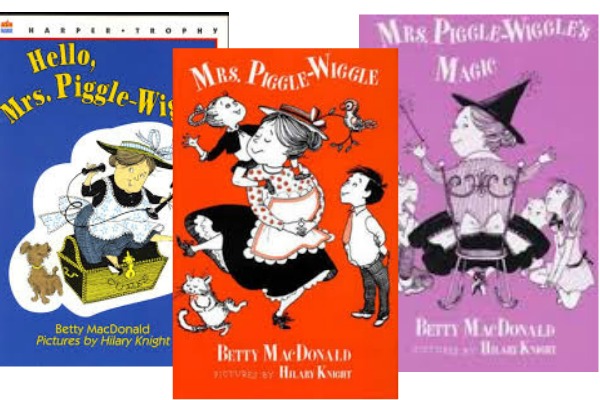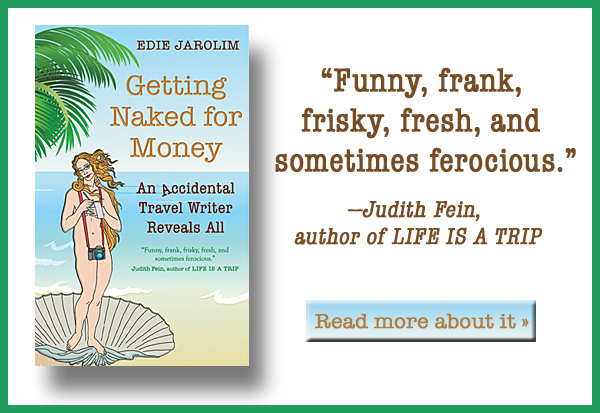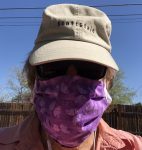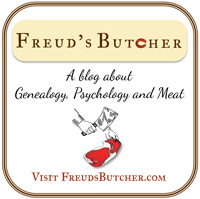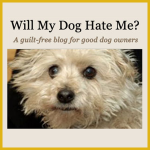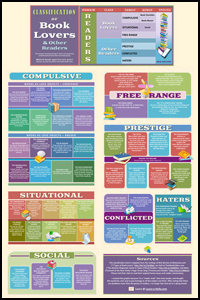Our Books, Our Childhoods
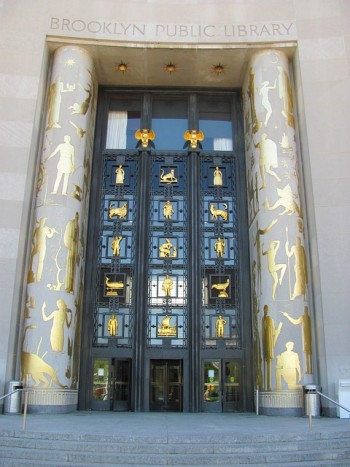
Brooklyn Grand Army Plaza Library, via Wikimedia Commons
It’s annoying when a Google Doodle makes you feel stupid, especially on a Monday morning.
On the day following Thanksgiving weekend, I opened my search engine to find a picture of a little girl eating a piece of cake and then turning green. What could this mean?
I asked my Facebook friends.
They soon set me straight: The doodle was meant to commemorate the birthday of Lucy Maud Montgomery, the Canadian author of the Anne of Green Gables series.
Several people expressed shock that I hadn’t I read any of the Anne books when I was a girl. They were, I was assured, classics — along with several others I’d missed out on.
(Very) Grand Army Plaza Library
That’s not to suggest I wasn’t a voracious early reader. I was encouraged to read by my parents, refugees from Vienna, but we didn’t own a lot of books. The few hardcovers I remember on our mostly decorative bookshelves weren’t great works of literature: Forever Amber, The Tontine, A Tree Grows in Brooklyn (this last is borderline, but what constitutes literature is a whole other topic).
I was later embarrassed by this lack of reading material — as I was by the fact that four of us shared a one-bedroom apartment, my parents sleeping on a pullout sofa in the living room.
But that’s just one part of my kid’s-eye perspective. Another part knew that, if we didn’t have books at home, we lived close to the mother lode: The Grand Army Plaza library near Brooklyn’s Prospect Park. Its soaring Beaux Arts pillars and windows, its gilded figures and symbols, marked the entryway to a sacred space, a vast temple to reading. We almost never went to synagogue, but the weekly walks with my mother to get new books were a religious ritual.
I was rich beyond imagining.
Animal Antipathy
Unfamiliar with American children’s books, my parents didn’t guide my kid lit choices. I still don’t know why I selected the ones I did. Maybe it was an extension of the aversion therapy my mother practiced when I watched cartoons on TV; she would stand behind me and tell me how she couldn’t stand the Road Runner, Wile E. Coyote, and all the other talking animals. I have no idea why.
But maybe her odd antipathy explains why I avoided such chatty critter-filled standards as Charlotte’s Web and Winnie the Pooh. There was one exception to my mother’s animal antipathy: Bambi, by Felix Salter. Salter was a landstman — an Austrian Jew, like my parents. I was as traumatized by the death of Felice, Bambi’s mother, as the rest of my peers.
Who Was Mrs. Piggle-Wiggle?
It might have been a librarian’s recommendation, then, that led me to Mrs. Piggle-Wiggle. I hadn’t thought about her for decades, not until that doodle got me pondering my early reading material. I couldn’t remember who wrote or illustrated the series of books she was featured in; I probably hadn’t noticed to begin with.
So naturally I googled them. And was blown away.
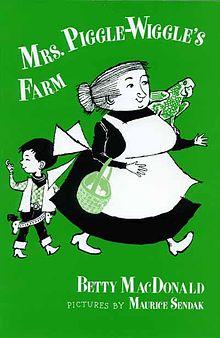 It turns out they were written in the 1950s by Betty MacDonald, best known for the earlier The Egg and I. I never read it, but its main characters, Ma and Pa Kettle, were part of the popular culture. The book spun off a number of Egg and I movies, one of which featured Claudette Colbert and Fred MacMurray.
It turns out they were written in the 1950s by Betty MacDonald, best known for the earlier The Egg and I. I never read it, but its main characters, Ma and Pa Kettle, were part of the popular culture. The book spun off a number of Egg and I movies, one of which featured Claudette Colbert and Fred MacMurray.
So — no slouch, this Mrs. Piggle-Wiggle author.
Illustrations? Three of the original four books were drawn by Hilary Knight, best known for Eloise, the little girl who lived at the Plaza. The fourth was inked by Maurice Sendak, of Where the Wild Things Are fame.
Maybe I wasn’t deprived of the classics after all.
And, though I didn’t know it, these books were not completely off the mainstream radar: Earlier this year, a New York Times article sang Mrs. Piggle-Wiggle’s praises.
I would like to tell you that my research brought back a flood of happy memories. A few, but not as many as I’d hoped. I recalled that Mrs. Piggle-Wiggle used delicious magic potions to gently punish misbehaving children — she might make radishes grow out of the ears of a child who refused to wash, say — and that the character names were wonderful: Carlotta Semicolon, Corinthian Bob, Harbin Quadrangle, and Paraphernalia Grotto…
Delicious potions and clever wordplay — I guess my interests set in early.
Our Childhood Books, Ourselves
It was fun to explore my nascent literary tastes but it didn’t address the original problem: When my friends expressed disbelief that I hadn’t read certain books and urged me to try them now, it pushed all the old buttons. Not being well off. Having parents who spoke with an accent. Not having a real American childhood.
Or a real Canadian one, come to that.
Then I considered things from another perspective. Rather than dissing my childhood, my friends were telling me about theirs. “This is what I loved when I was young,” they were saying. “It’s part of who I am. I want you to love these books too.”
Once again, I had failed to recognize my riches: Friends, real and virtual, who cared enough to share.
So I appreciate the recommendations. But I’ve got a long list of grown up books I want to tackle.
Besides, my friends’ books would be missing an essential element for me: The childhood memories that imbue them with special meaning.
Not to mention I would feel terrible if I read them and didn’t like them.
